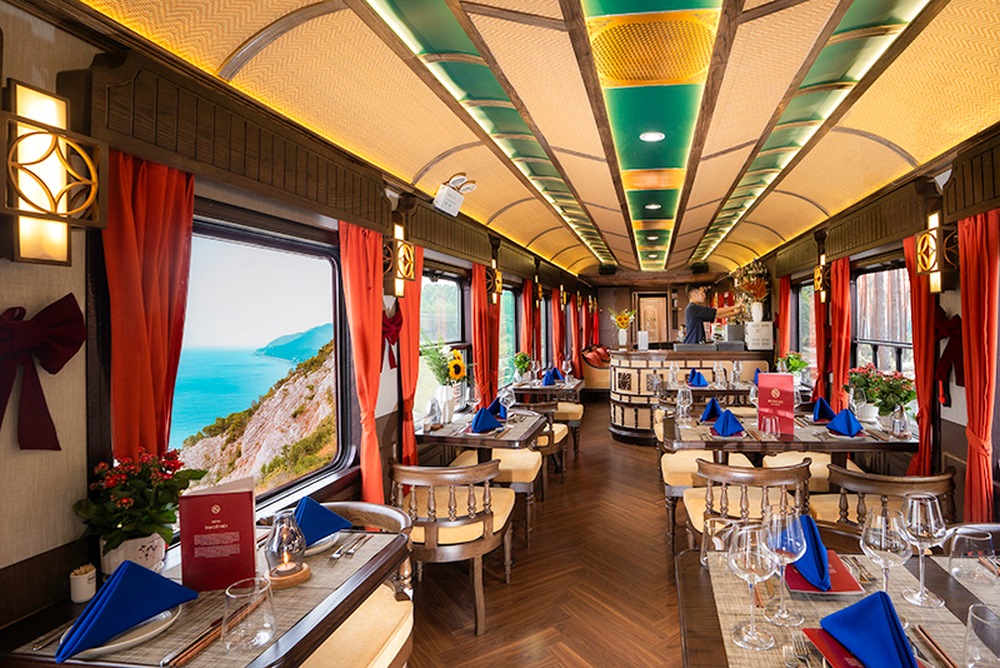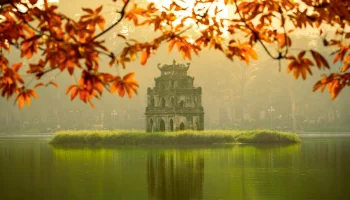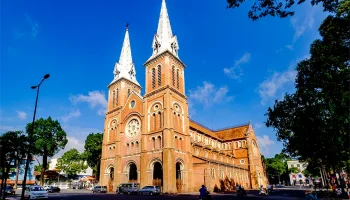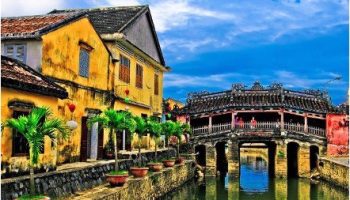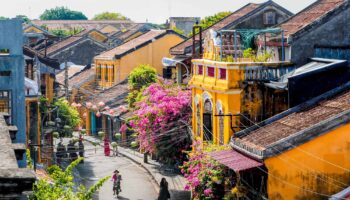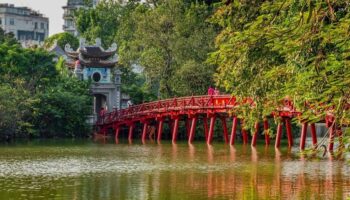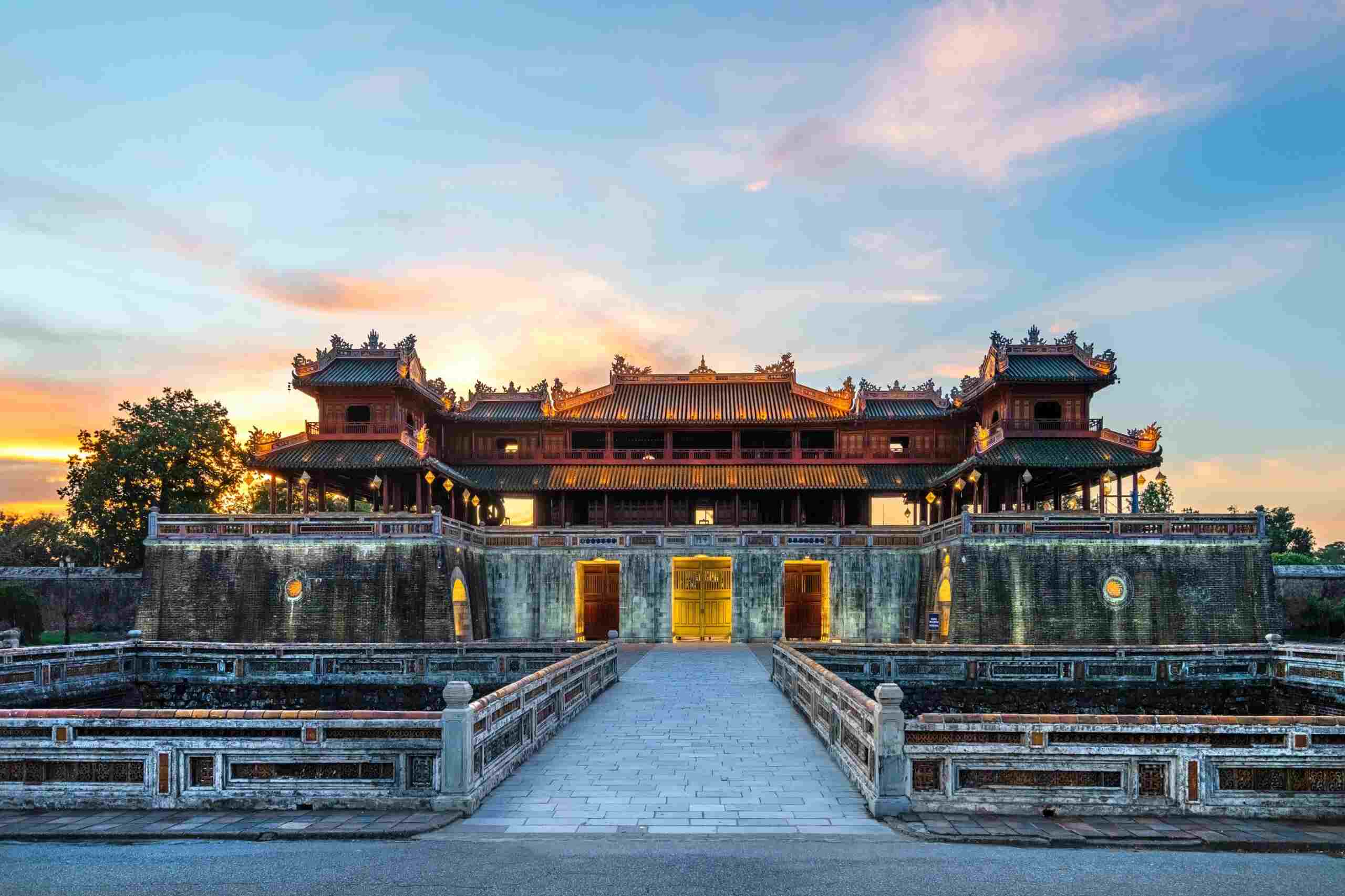
Hue Station: A stop that connects travelers to Vietnam’s imperial past
Hue Station is not just a railway halt, it is the historical entrance to the heart and soul of the former imperial capital of Vietnam. While trains come and go, they bring with them the reminders of a city which was once the capital of the Nguyễn Dynasty, and emperors shaped history and traditions. This station is located in the central part of Hue and has been there for quite a long time, watching how the world is changing, how the pace of the royal past and the present transforms. Through its doors, the travelers find themselves in the land of ancient palaces, poetic landscapes, and a rich historical and cultural spirit, which defines the spirit of the city.
Table of Contents
Toggle1. Hue Station and Its Historic Foundations
Hue Station was established in the early twentieth century during the French colonial era as one of Vietnam’s growing railway stations which were supposed to ferry people and goods between cities and connect trade routes. Designed in classical European style, its architecture also reflected the colonial influence, as well as the splendour of Hue, the imperial capital of Vietnam.
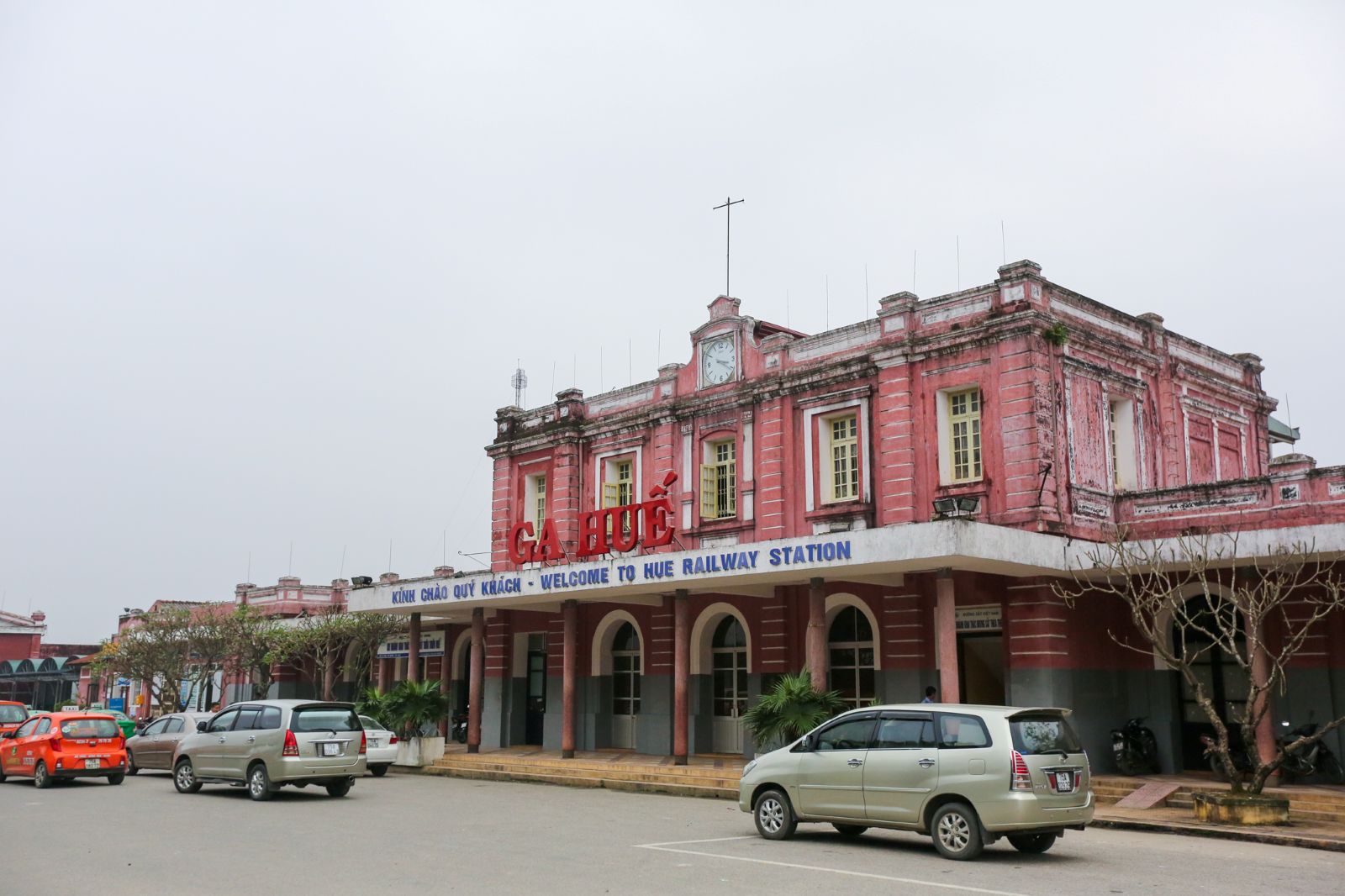
During the Nguyễn Dynasty (1802–1945), Hue was the capital of political and cultural life of the country. Although the railway was built much later, it became an important transport artery, which linked the royal city with Hanoi in the North and Saigon in the South. It enabled not only the exchange of goods but also of ideas, people, and cultural experiences, although it did so rather quietly and was an important factor in the formation of modern Vietnam.
Read more: The History of Railway In Vietnam: From Basic Transport to Classy Indulgence
Like most historical buildings, Hue Station has been through its share of turmoil. In the 20th century, it was a target and a sanctuary during the wars. The station was bombed during the Vietnam War, especially in the 1968 Tet Offensive that almost brought the city to its knees. Nevertheless, Hue Station has withstood the test of time and is still an important transport node and a landmark of the capital.

For international tourists Hue Station is not just a gateway, it is the beginning of the journey through the cultural heritage of Vietnam. After getting off the train, tourists are surrounded by the sounds of history, from the majestic Imperial Citadel to the romantic Perfume River. The past of the station casts a shadow on the present and makes the visitor feel that he or she has been transported to the last days of the last dynasty of Vietnam, has been able to visit centuries old temples and royal tombs, and has heard the classic music of Hue’s courts and has tasted its traditional food.
Hue Station is the gateway to a city of history and its continuing presence of tradition and advancement, no matter if one stays for a short time or wants to discover more.
2. Strategic Location in the Heart of Hue
The station is situated at 2 Bui Thi Xuan, Hue City and is situated quite close to the cultural and historical landmarks of the city. Those who arrive in Hue by train are stepping into a world where history and culture are intertwined with the present.
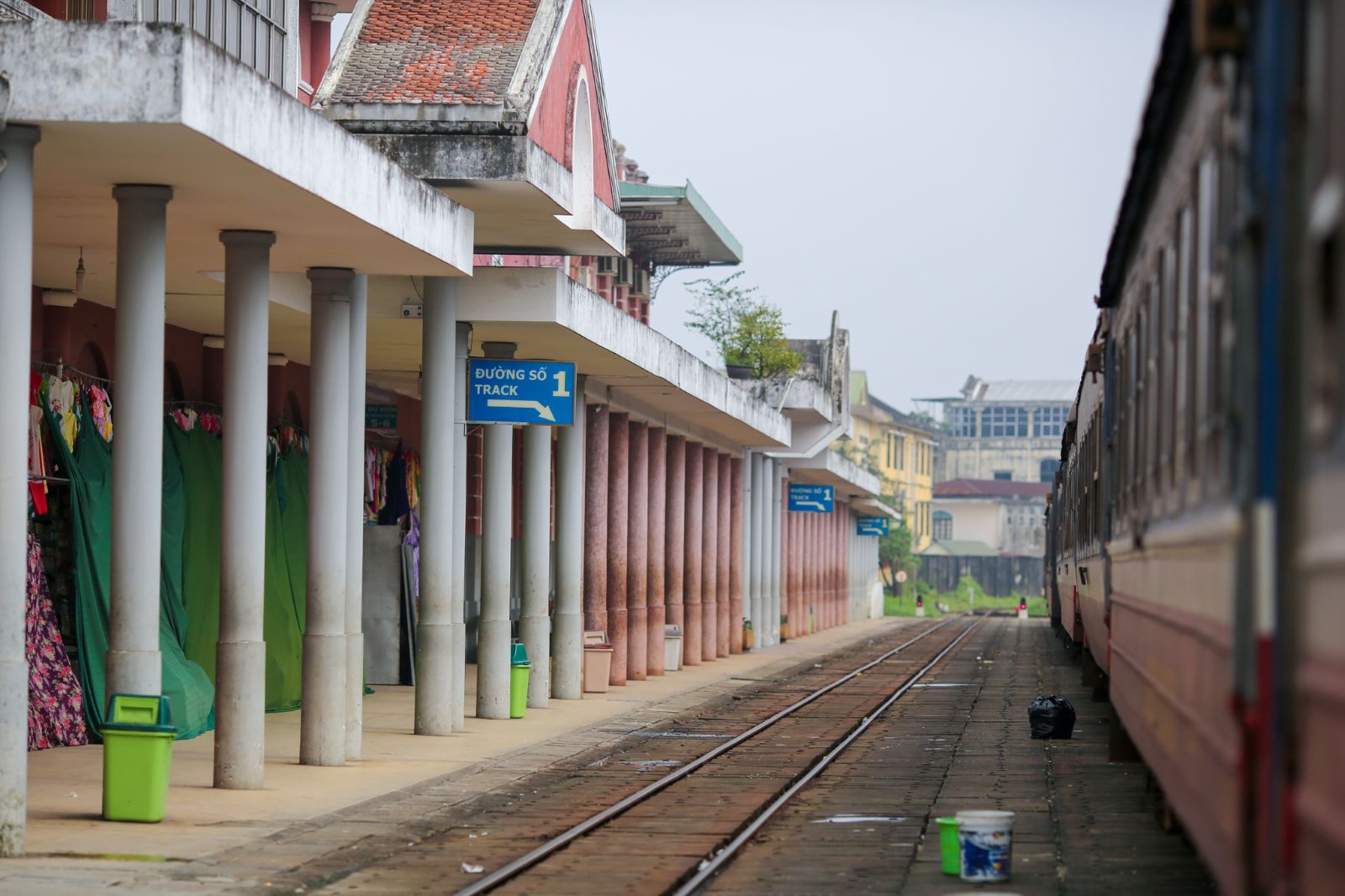
- The Imperial City (Dai Noi): The walls and palaces of the ancient Nguyễn Dynasty are not far from the station and the history of emperors, mandarins and royal court rituals can still be felt in the air.
- Thien Mu Pagoda: This pagoda is located on the bank of the Perfume River and is one of the most serene and spiritual places in Hue.
- Dong Ba Market: Hue’s largest market, which gives an insight into the local life, with stalls selling traditional food, handmade products, and other artifacts.
- Perfume River: This river is the heart and soul of Hue, and has been the subject of poetry, art, and music, and is considered an important part of the city.
Hue Station does not have the appearance of a new railway station in a large city. The pace of departing trains, the gentle shine of the street lights at night and the sounds of vendors selling food on the platforms make it a place that is linked to the past and present.
3. Hue Station as a Cultural and Historical Landmark
Hue Station is not just a transit hub, it is a cultural hub, the cultural hub of the city. The people of Hue are gentle, have a poetic dialect and are very traditional and all this can be seen in the daily activities of the station.
This is where trains don’t just bring visitors but bring the hearts of those going back home. Hue is the capital of the ancient imperial city and many of the natives of Hue have left the country and are always looking to return to the quiet nostalgia of their birthplace. For generations, Hue Station has been a place of emotional reunions and tearful farewells, echoing the sentiments found in the poetry and songs of this historic city.
However, right outside the station you will find a cultural charm in the form of old fashioned coffee shops. These cafes, which have been in business for decades, have become a part of the station’s history. Here, travellers drink strong Vietnamese coffee, watching the world go by – lovers parting, families hugging and the pulse of the city synchronised to the arriving and departing trains. Simple yet timeless, these cafes are a part of the railway heritage of Hue and they are a place to stop and take a moment before the journey resumes.
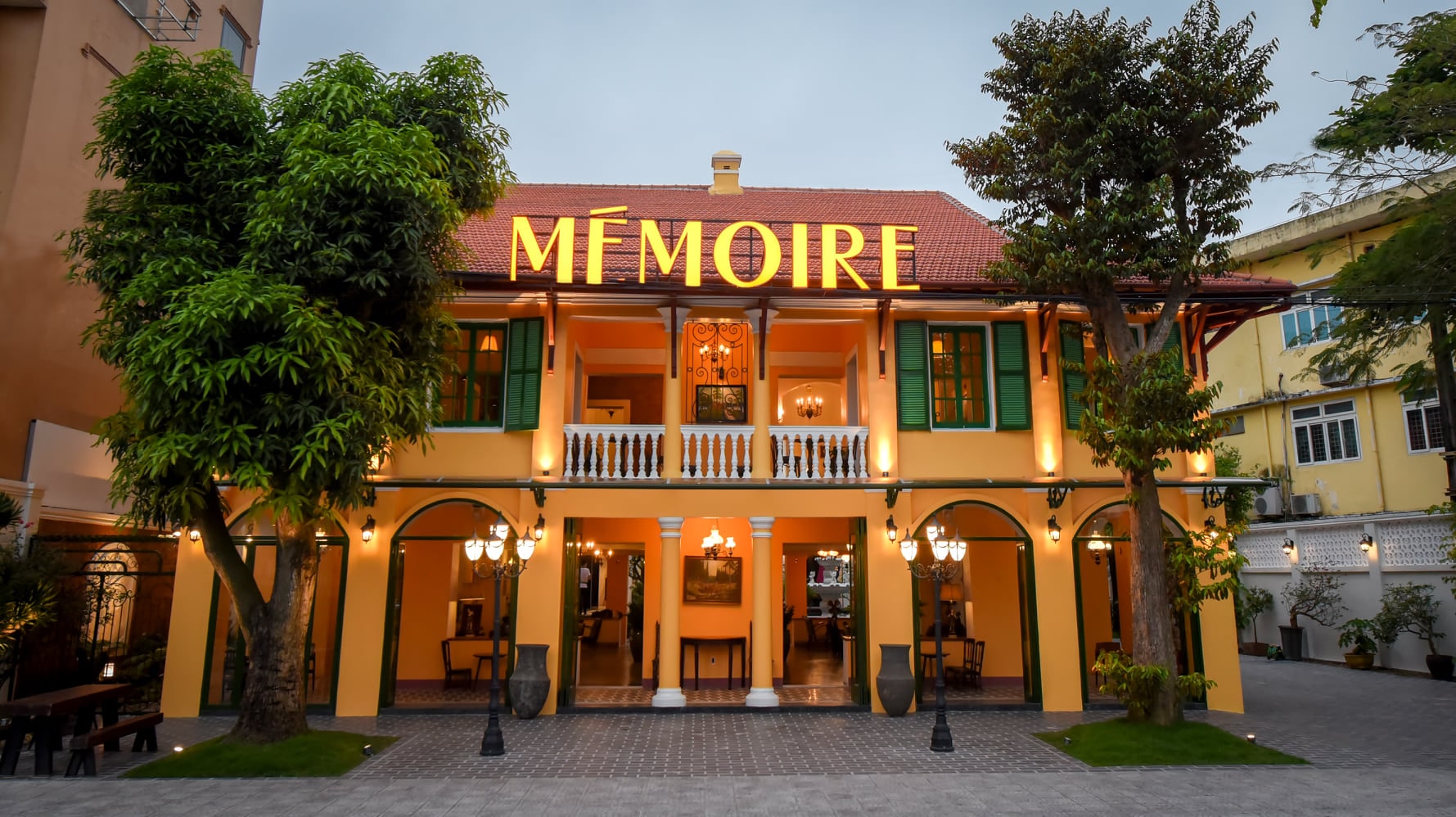
4. Journeys and Destinations from Hue Station
The trains departing from Hue Station are carrying passengers across Vietnam through some of the country’s most culturally and geographically significant landscapes to Hue Station. More than just transportation, these routes provide a window into Vietnam’s diverse heritage.

- Hue – Hanoi: This route takes passengers north, along the Reunification Express, showing you central Vietnamese villages, rice paddies, and misty mountains arriving in the bustle of the capital city.
- Hue – Da Nang – Saigon: The train follows one of Vietnam’s most scenic coastal routes heading south, through the mountains meet the sea at Hai Van Pass before continuing to the modern metropolis of Ho Chi Minh City.
- Hue – Dong Hoi: This is a shorter but equally meaningful journey that takes you to Quang Binh Province, with its breathtaking Phong Nha Ke Bang National Park and its world famous caves.
Every departure from Hue Station is more than just a journey – it is a journey to the heart of Vietnam. During the train ride, one gets to see misty mountains, lush rice fields, and winding rivers while on the journey to discover the beautiful country. Every mile is a story that echoes of emperors, poets, and warriors; offering guests a front row seat to Vietnam’s past and present, woven into a captivating tapestry of history.
5. Booking Tickets and Travel Tips from Hue Station
5.1. How to Book Tickets
- At the Station: Tickets can be bought from the counters themselves; however, it is advised to reach the stations early especially during peak periods and public holidays.
- Online Booking: Vietnam Railways website and mobile banking apps enable passengers to do the booking, select their preferred carriage and make the payment easily.

5.2. Ticket Retrieval
- E-Tickets: Passengers are required to show the e-ticket on their mobile phone when boarding the train.
- Printed Tickets: Those who have purchased their tickets online can have their tickets printed at the station or at home prior to the trip.
5.3. Required Documentation
- Adults: Passport, national ID, or any other valid photo ID.
- Children: The birth certificate (or passport) for age identification.
- Students & Seniors: Student ID or proof of age for the reduced fare.
5.4. Pre-Departure Recommendations
- Arrive Early: Turn up at the station 30 – 60 minutes before the departure time to go through the process of checking in and getting on the train.
- Check Your Ticket Details: Verify that the information on the ticket coincides with the details of the identification document to prevent delays.
- Pack Light: Although there is enough space in the carriage for the luggage, it is always easier to travel with minimal bags.
- Respect the Local Culture: Hue is a cultural city; it is good to respect the norms of the area and dress appropriately when visiting.
Hue Station has been sitting idle for more than a century now and has seen the change of rulers from emperors to commoners, seen the worst of war and the best of peace, and carried hundreds of people on their trips across the land. It is more than a railway station; it is a cultural landmark: a place where the old and the new, the war and the peace, the tradition and the innovation can be felt and heard, and every journey begins with a touch of nostalgia and respect.
Hue Station is where everyone who travels in and out of the country steps into a world where the old and the new, the traditional and the contemporary coexist. Whether visiting the Imperial City or just busing through on a countrywide tour, everyone who sets foot in this city finds himself or herself in the heart of Vietnam. Among the trips that are made through this historic station, SJourney takes its travelers beyond the ordinary – offering not just a route, but an experience that connects the elegance of Hue’s royal heritage with the ever-changing landscape of Vietnam. As the train glides along its tracks, each stop becomes a chapter in a grander narrative, and Hue Station stands as a gateway to the past, a crossroads of culture, and a passage into the heart of Vietnam.
Read more:
Hanoi Station: The gateway to Vietnam’s capital and its historical significance.
Nha Trang Station: The coastal charm and its role in connecting tourism.
Saigon Station: The bustling end of the line and the heart of southern Vietnam.




